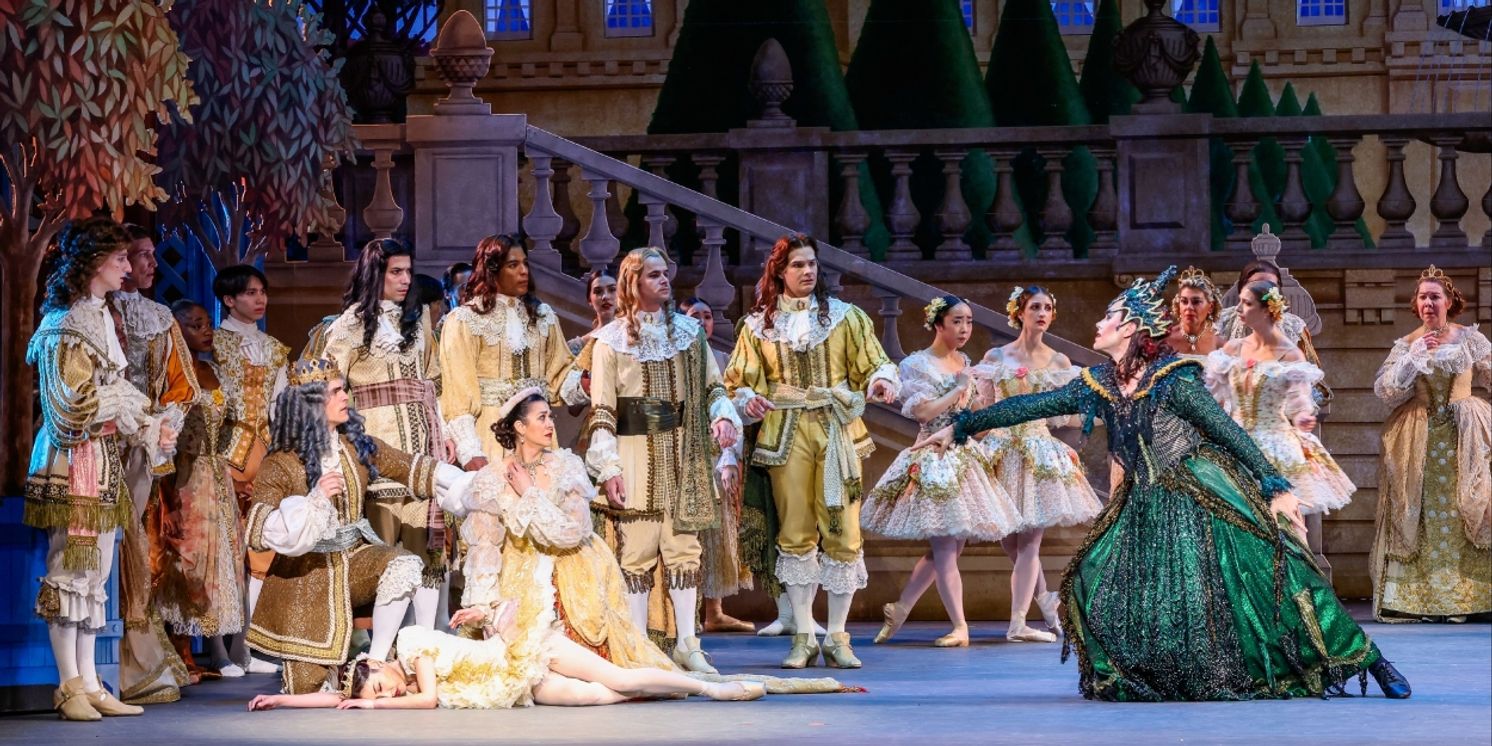Review: THE SLEEPING BEAUTY at Kennedy Center
The Washington Ballet favorite serves as Julie Kent's farewell

It's really the perfect weekend for the Washington Ballet's revival of its grand "The Sleeping Beauty." With all the pomp and pageantry currently dominating news cycles, with flocks of kids are seen trailing behind newly-crowned monarchs lugging their elaborate trains, it didn't seem so out of place to see the same kind of splendor at the Kennedy Center.
The glittering season-closing performance is even more notable for being the last also for high profile artistic director Julie Kent after seven years. With her husband and artistic co-director Victor Barber, they first introduced their elaborate ballet in 2019, with choreography after Marius Petipa, the French ballet master who first created the work with Pyotr Tchaikovsky in 1890.
Petipa and Tchaikovsky would go on to revive the latter's "Swan Lake" and create no less than "The Nutcracker," which would become many ballet company's bread and butter, including the Washington Ballet's, which presented 40 performances of it last season.
"The Sleeping Beauty" would be a familiar delight to the same audiences, with the same kind of dream-like structure, fairy tale touches - and a king and queen sitting to the side watching the unfolding dance creations in three of the four acts. Plus it has a familiar melody in the waltz that opens act two. The Washington Ballet Orchestra, conducted by longtime collaborator Charles Barker, was stirring throughout.
Visually, it was sumptuous, with Alain Vaes' set of the style of 17th century French and scores of detailed costumes and finery from designer Peter Cazalet, with set and costumes courtesey of Salt Lake City's Ballet West.
The production does a good job in both showcasing the best of its company dancers, include its studio company dancers and throw in dozens and dozens of trainee division and ballet school students. This is not to mention the supernumeraries standing around in the back in equally fine costumes. Still, it never seems crowded up there.
It's a bit of a puzzle to find the casting for individual nights - there's a printed program but a QR code to scan within it, but on opening night, the German-born Ayano Kimora was a fine Auora, with an uncanny ability to stand stock straight on her toe for long periods of time. She looked all of 16 in act two, though she's been with the company for a decade - the prince suitors almost looked creepy looming around her.
Each of the fairies bringing their own wishes was a delight in their own way, accompanied by cavaliers and a squad of gift-bearing children.
There's no Mallificent here - it's best to keep the Disney picture out of your mind. But there's no question that Nicholas Cowden means harm when the Fairy Carabosse sashays malevolently onto stage with a surprising group of zombie sidekicks of various sizes. Like the Wicked Witch of the West, her departures come with flash-bang and smoke (and the role is traditionally played by a male in the production).
One does have to be reminded about the power of the bewitched spindle which instantly fells the princess, a spindle not being as common these days as then.
The scene in the woods is a nice change of pace and provides some lovely group dances, with entrancing geometrics. Again the costumes matched the grace of the movement.
The story gets a little muddled here, and it changes in the various versions, but not only the princess but the entire kingdom falls into a 100 year coma when it's come upon by the particularly sad prince (Masanori Takiguchi), who is told the legend of the sleeping princess by the gracious Lilac Fairy (Adelaide Clauss), who dances with a lit-up spring as if a magic wand.
The princess appears, but only in a vision, before he finds her in a memorable tableau on a bed surrounded by nymphs.
The final wedding scene is even more celebratory than the christening or Sweet 16. It hardly seems a century has passed (certainly nobody has aged!). But to add to the fairy tale feel, unexpected storybook guests include a teasing feline with Puss-in-Boots (Brittany Stone and Oscar Sanchez) and Red Riding Hood and the Wolf (Catherine Doherty and Jie-Siou Wu).
These Mother Goose additions enhance the family appeal of the performance, I suppose, and were certainly a delight to the Kennedy Center audience. The standout dancing from Princess Florine and The Bluebird (Alexa Torres and Rench Soriano) certainly made the fairy tale guest list worthwhile.
The story of course culminates in the dance of the new couple. Takiguchi, who also performs the Blue Bird in some performances, is a deferential pair dancer, eager to display the spins of the princess to her best. But given a chance in a solo spotlight, he emerges with some remarkable leaps on his own.
Praise rightfully rained down on the large company at evening's end - here was a production as satisfying as any "Nutcracker" and nobody had to fight winter weather to get to it. As each took a bow, the greatest ovation (and biggest bouquet) came for the departing Kent, having a good time swirling her own gown.
She had thanked audiences before the performance as well, when she mentioned that the best parting gift she could receive, as she leaves for the Houston Ballet, were subscriptions for the 2023/24 season announced in the program.
Running time: Two hours and 20 minutes, including one intermission.
Photo credit: xmbphotography.
"The Sleeping Beauty" by the Washington Ballet runs through May 7 at the Kennedy Center for the Performing Arts, 2700 F St NW. Tickets available online.
Reader Reviews
Videos

